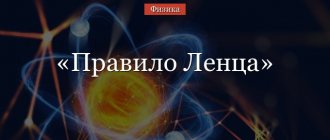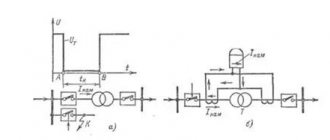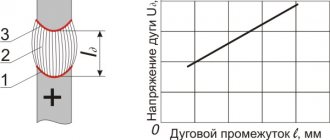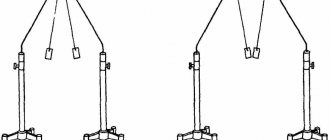Content
Electric current is the ordered movement of charged particles. These particles can be not only free electrons , but also ions .
Metals are excellent conductors. Which particles move under the influence of an electric field in them: electrons or ions?
In this lesson you will learn the answer to this question. We will recall some facts about the structure of metals and consider the processes that will occur in these substances when current flows.
Structure of metals
Being in a solid state of aggregation, metals have a crystal lattice . This is an ordered structure: each atom is in a strictly defined place.
But what particles will then ensure the flow of electric current? The fact is that there are positive ions (Figure 1). Free electrons constantly move in the space between these ions .
Figure 1. Crystal lattice of metal
Let's remember a little about what particles such as ions are. Under normal conditions, atoms are electrically neutral. Electrons carry a negative charge, and protons in the nucleus carry a positive charge. This charge is the same in modulus. Thus, in an electrically neutral atom, the number of electrons will be equal to the number of protons in the nucleus.
If an atom loses even one electron, it loses its electronic stability. Now the total positive charge of all protons in the nucleus is greater in absolute value than the negative charge of electrons. Such an atom is called a positive ion .
In this structure lies the answer to the question: “ Why is metal electrically neutral under normal conditions?” "
The negative charge of all free electrons is equal in absolute value to the positive charge of all lattice ions.
Note the fact that not all electrons in metals are free. Some of them remain associated with the nuclei of atoms, while the other part moves randomly between these atoms.
These electrons are initially found in the orbits furthest from the nucleus. They are weakly connected to the nucleus. Therefore, they can quite easily move from one atom to another, repeating this process many times. It is this movement that we call the random movement of free electrons .
Textbooks
Varlamov A. How does electric current flow in metal? // Quantum. – 1995. – No. 1. – P. 37-38.
By special agreement with the editorial board and editors of the journal “Kvant”
This question usually does not cause difficulties for schoolchildren. How is it going? Yes, very simple. If a potential difference is maintained between the ends of a conductor, for example a metal one, then an electric field arises in it. Acting on the free electrons present in the metal, this field gives them acceleration in the direction of the end of the conductor whose potential is higher (the charge of the electrons is negative). A directed movement of charges occurs, which is an electric current.
This is not to say that this answer is wrong. All the words in it are true. However, this seemingly exhaustive answer immediately raises a number of other questions and objections. Let's try to figure them out too.
How do electrons move when a potential difference is created between the ends of a conductor? It would seem accelerated, because the force \( \vec F = e \cdot \vec E\) acts on them all the time (\( \vec E\) is the electric field strength in the conductor). But, on the other hand, if this were really the case, then the current strength in any section of the conductor would increase over time, which contradicts Ohm’s law - at a constant voltage, the strength of the current flowing through the conductor is constant\. How to be? Let's remember the internal structure of metal.
The valence electrons of metal atoms are bonded to the atoms very weakly. Therefore, during the formation of a crystal lattice, they easily break away from the atoms and form a fairly dense electron gas (even if only one electron breaks away from each atom, then their concentration in such a gas will be of the order of n
~ 1029 m3, which you can see for yourself). Reasoning above about the flow of current through a metal, we considered these electrons to be free. In a certain sense, this is true, but we should not forget about their environment - the ionic crystal lattice.
Created at the end of the 19th and beginning of the 20th centuries, the classical electronic theory of metal resistance assumed that in the process of moving under the influence of an electric field, electrons collide with ions of the crystal lattice. Among these collisions, there are also those in which the electrons transfer all the energy acquired during acceleration in an electric field to the lattice. It is precisely such collisions that are called effective
, and are responsible for the resistance of the metal. The remaining collisions can be ignored to understand the mechanism of current flow (after them only the direction of the electron velocity changes, but not its magnitude).
Let the average time between collisions be τ. Then we can imagine the following model of the movement of an electron in a metal in which an electric field is created. In the time interval from 0 to τ, the electron moves with acceleration \( \vec a = \dfrac {e \cdot \vec E}{m}\), and, therefore, the projection of the speed of its directed motion against the field \( \vec E\ ) increases linearly with time\[ \upsilon = a \cdot t = \dfrac {e \cdot E \cdot t}{m}\]. At time τ, the electron collides with the ion and completely transfers the kinetic energy of its directed motion to the lattice. Then it is again accelerated by the electric field, and the process repeats. A graph of the projection of the speed of ordered movement versus time is shown in Figure 1.
Rice. 1
Such piecewise uniformly accelerated motion can be imagined as a uniform drift of an electron in the direction opposite to the field, with a speed of \( \upsilon_{cp} = \dfrac {e \cdot E \cdot \tau}{2m}\). Let us calculate the current strength associated with this movement.
Number of electrons passing through cross section S
conductor in time Δ
t
, there is \( \Delta N = n \cdot S \cdot \upsilon_{cp} \cdot \Delta t\).
In this case, the charge \( \Delta q = e \cdot \Delta N = n \cdot e \cdot S \cdot \upsilon_{cp} \cdot \Delta t\) will be skewed. Consequently, current flows in the conductor \( I = \dfrac {\Delta q}{\Delta t} = n \cdot e \cdot S \cdot \upsilon_{cp} = n \cdot S \cdot \dfrac {e^2 \cdot \tau}{2m} \cdot E\).
Quantity \( j = \dfrac {I}{S} = \dfrac {n \cdot e^2 \cdot \tau}{2m}\cdot E\). called current density.
It turns out that the coefficient we obtained for the field strength E
, which is made up only of the microscopic characteristics of the metal, is nothing more than the reciprocal of the metal’s resistivity ρ.
Well, something began to become clearer. However, questions still remain. Let's, for example, estimate the average speed of directional motion of electrons. Let a copper conductor with a cross section of, say, 10 mm2 and electron concentration n
= 1.67∙1029 m-3 current I = 10 A flows. Then the average speed
\( \upsilon_{cp} = \dfrac {I}{n \cdot e \cdot S} \approx \) 0.04 mm/ With.
If we determine the time between effective collisions using the experimentally known value of ρ, it turns out that τ ~ 10-14 s. Therefore, if we assume that the path between effective collisions occurs with an average speed υcp ~ 0.1 mm/s, then we come to an absurd statement: the distance between two electron collisions is \(l = \upsilon_{cp} \cdot \tau \ sim\) 10-18 m, which is many orders of magnitude less than the distance: between the nearest nones in the lattice. Therefore, we again did not take something into account.
But we did not take into account the fact that particles of electron gas in a metal, like molecules of an ideal gas in a vessel, are in constant chaotic motion. However, if we use this analogy and substitute υcp into the expression for l
thermal speed \(\upsilon_{t} = \sqrt{\dfrac{3k \cdot T}{m}}\), then this will still not be enough to agree with the experimental data (see this for yourself).
We have exhausted the possibilities of classical physics. In fact, a consistent theory of the resistance of metals was built only in the middle of the 20th century using the concepts of quantum physics. It turned out that electrons in the metal move at gigantic speeds υe ~ 0.01 s
(
с
– speed of light in vacuum). This chaotic movement of electron gas particles is of purely quantum, not thermal origin - it does not stop even at absolute zero temperature. But even at such enormous speeds of chaotic movement of electrons in the absence of an electric field, the average charge transfer through a selected section of the conductor is zero. When the electric field is turned on, this chaotic movement is superimposed by an ordered drift of electrons against the field - as has already been described above. The distance between two successive collisions is determined precisely by the high speed of chaotic motion and for the specific copper conductor we took is several tens (and maybe even hundreds) of interatomic distances, which is already quite plausible.
And finally, the last surprise. According to the laws of quantum mechanics, an electron in an ideal periodic crystal lattice moves in such a way that it... never collides with the ions that form it. What then to do with all our previous speculative constructions? How then do electrons, when moving in a crystal, transfer their energy to the lattice?
It turns out that at low temperatures electrons collide with impurity atoms and other defects that are always present in the lattice of a real crystal. By eliminating them, the resistance of crystalline metals can be made less and less. At room temperatures, electrons are mainly scattered by... lattice vibrations. If in a stationary lattice they could still “structure” their behavior in such a way as to “bypass” all periodically repeating ions, then when the latter perform thermal vibrations, the electrons can no longer “follow” their chaotic movement and inevitably collide with one or another with another.
Here, in brief, are the “pitfalls” that we encountered upon careful consideration of what seemed to be such a clear question.
Current in metals
Let's create an electric field in the metal using any current source. Positive ions will remain in the nodes of the crystal lattice. It is the free electrons that will come into motion under the influence of electrical forces. Their movement will become directional (Figure 2).
Figure 2. Current in metal
At the same time, the disorder of this movement will remain . How can you imagine this? Imagine a flock of midges, where each insect moves randomly. If the wind blows, then this flock will begin to move in one direction, while the disorderly movement within this flock will remain. This is what the movement of electrons under the influence of electrical forces will look like.
Now we can determine the nature of electric current in metals and give it a definition.
Electric current in metals is the ordered movement of free electrons.
Calculation formula
An accurate calculation of the specific charge (em) in metals can be determined using the following formula:
Em=lu0Rq
Where:
- l is the current strength that instantly appears in the conductor when the coil stops;
- u 0 is the initial linear speed of the wire turns;
- R - circuit resistance;
- q is the charge.
The experiments carried out by R. Tolman and B. Stewart made it possible to organize previously obtained information from other scientists. Despite this, electrical conductors have been actively used in electrical products since the beginning of the 19th century , proof of the electronic nature of current in metals has accelerated the emergence of complex devices.
Evidence-based experiments
The conclusions we have drawn are not just based on reasoning, but have also been proven empirically many times. Russian scientists Leonid Isaakovich Mandelstam (Figure 3) and Nikolai Dmitrievich Papaleksi (Figure 4) conducted a number of interesting experiments. These experiments were later confirmed by American physicists Balfour Stewart and Robert Tolman .
Figure 3. Leonid Isaakovich Mandelstam (1879 - 1944) - Russian and Soviet physicist, one of the founders of the scientific school of radiophysics
Figure 4. Nikolai Dmitrievich Papaleksi (1880 - 1947) - Russian and Soviet physicist, founder of radio astronomy
The essence of the experiments was as follows. It is already known that there are some free charges in the metal, and they have mass. Then they must experience inertia.
To test this assumption, a metal conductor had to be set in motion and then suddenly stopped. For convenience, we used a rotational movement rather than a translational one.
The metal wire was wound around a wooden frame and untwisted (Figure 5). After an abrupt stop, the occurrence of current was recorded using a galvanometer.
Figure 5. The experience of Mandelstam and Papaleksi
It was determined that it was the electrons that were flying out of the conductor. This was established by determining the ratio of the charge to the mass of its carrier. Scientists already had this data for the electron.
The experience of Mandelstam and Papaleksi
The electronic nature of current in metal was first experimentally proven by Russian physicists Mandelstam and Papaleksi in 1913. In order to find out which particles create electric current in metals, they - without connecting an external source - recorded the current in a coil of metal wire, which was first strongly spun around its own axis, and then abruptly stopped. Since the electron has mass, it must obey the law of inertia. Therefore, at the moment of stopping, the lattice atoms will remain in place, and free electrons, by inertia, will continue to move in the same direction for some time. That is, an electric current must appear in the circuit. Experiments confirmed this assumption - after the coil stopped, the researchers recorded an inrush of current in the circuit.
Rice. 2. The experience of Mandelstam and Papaleksi.
This experiment was repeated in 1916 by the Americans Stewart and Tolman. They managed to increase the accuracy of measurements and obtain the ratio of the electron charge ee to the value of the electron mass me:
$$ {e_e \over m_e } = 1.8*10^{11} C/kg $$
This fundamental result coincided with data obtained from other experiments based on measurements of other parameters. This value was first measured in 1897 by the Englishman Joseph Thomson from the deflection of an electron beam depending on the electric field strength.
Speed of propagation of electric field and current in metals
After creating an electric field, free electrons begin to move. Their speed of movement is very low. On average it is several millimeters per second.
But how then does the lamp in the room light up instantly after clicking the switch? The situation is as follows.
itself that propagates in the conductor at enormous speed. It is close to the speed of light in vacuum ($c = 300 \space 000 \frac{km}{s}$). The field propagates along the entire length of the conductor.
Accordingly, all electrons in the conductor come into motion simultaneously. And those that are closer to the switch, and those that are closer to the electrical appliance.
For example, let's send an electrical signal from Vladivostok to Moscow. The distance between these cities is about 8000 km. In Moscow, the signal will be detected in 0.03 s. This does not mean that electrons from Vladivostok traveled all this way in the specified time and arrived in Moscow. No, this electric field spread through the wires at incredible speed and set in motion the electrons closest to the receiver in Moscow, which was recorded.
Therefore, when we talk about the speed of current propagation in a conductor, we mean the speed of propagation of the electric field along the entire length of the conductor.
What are metals?
“Metal is a light body that can be forged,” Lomonosov wrote in 1763. Take a look at your chemistry textbook and you will see that metals have a characteristic metallic luster (“light body”) and conduct heat and electric current well. True, you will immediately read that there are elements that exhibit the properties of both metals and non-metals. In other words, there is no clear line separating one from the other. A chemist, who is interested primarily in chemical reactions and for whom each element is its own special world, is not very confused by such ambiguity. But physics is not happy with this. If physics divides bodies into metals and non-metals, then you need to understand what their fundamental difference is. Therefore, it is necessary to define what a metal is in such a way that, as in other cases in the field of exact sciences, it satisfies two requirements:
- all metals must have all the attributes attributed to them without exception;
- other objects must not have at least one of these characteristics.
Armed with these considerations, let's see if all metals, without exception, have all the properties attributed to them in the textbook. Let's start with “you can forge”, i.e. with plasticity, in modern terms. And then, out of consonance, we remember plastics: it’s not for nothing that they are called that, many of them are characterized by plasticity - the ability to irreversibly change shape without destruction. Of course, copper, iron, and aluminum are easy to forge, with lead it is even easier; indium is a rather rare and expensive metal - it can be crushed almost like wax (and wax is not a metal!), alkali metals are even softer. But try to hit ordinary cast iron and it will fly into pieces! Well, then metallurgists will say: this is because cast iron is not a simple substance. It consists of iron crystals separated by layers of carbon, i.e. graphite. It is along these layers that cast iron breaks. Well, that's right. The only problem is that brittle graphite, as it turns out, is classified by modern physics as a metal! Yes, and not only graphite: for example, among the metals are arsenic, antimony and bismuth, but they can be forged with the same success as glass - they shatter into small pieces!
Do this simple experiment: break the cylinder of a burnt lamp, take out a tungsten spiral from there and try to unwind it. Nothing will come of it, she will crumble into dust! But somehow they managed to twist it at the factory? This means that this may be the case - sometimes it can be deformed, sometimes it can’t, depending on what happened to the sample in the past. Well, apparently, we will have to part with this characteristic - plasticity. Moreover, it is inherent in many non-metals; After all, the same glass - heat it, and it will become soft and pliable.
So, let's shorten the wording and move on.
Next up is “gloss,” or, in scientific terms, optical properties. There are a lot of shiny objects: water, glass, polished stones, and who knows what else. So just “shine” is not enough, so they say: metals are characterized by a metallic luster. Well, this is very good: it turns out that metal is metal. True, we intuitively feel that polished copper, gold, silver, and iron shine with a metallic sheen. And doesn’t the widespread mineral pyrite shine like metals? There is no need to talk about typical semiconductors germanium and silicon; you can’t distinguish them from metals by their appearance. On the other hand, not so long ago they learned how to obtain good crystals of compounds such as molybdenum dioxide; These crystals are brownish-violet and bear little resemblance to ordinary metal. It turns out that this substance should be considered a metal. Why will become clear a little later.
So shine as a purely “metallic” feature disappears.
Next up is thermal conductivity. Perhaps this sign can be discarded immediately - all bodies, without exception, conduct heat. True, it is said about metals that they are good
conduct heat. But, I’m afraid, the question “what is good and what is bad?” in this case, no dad will answer.
Is copper a good conductor of heat? Let's look at the table and immediately come across a counter question: what kind of copper and at what temperature? If you take pure copper, for example the kind from which wires for radio devices are made, and heat it to red heat, that is, anneal it, then at room temperature it and even pure silver will conduct heat better than any other metal. But bend such a copper sample, hit it or clamp it in a vice, and its thermal conductivity will become noticeably worse. What happens if a piece of annealed copper begins to cool? First, thermal conductivity will increase, increase tens of times at a temperature of about 10 K, and then begin to quickly fall and when reaching absolute zero it should become zero (Fig. 1).
Rice. 1. Dependence of specific thermal conductivity on temperature for various substances. (Thermal conductivity is the amount of heat that flows between opposite faces of a cube with a side of 1 cm when the temperature difference between these faces is 1 K in 1 s.)
Let's now take another metal - bismuth. The picture for it is very similar to the one we saw for copper, only the maximum thermal conductivity lies at 3 K, and at room temperature bismuth conducts heat poorly, not much better than a quartz crystal. But quartz is not a metal! And the same quartz, as can be seen from Figure 1, sometimes turns out to be no worse than copper in its thermal conductivity properties. But fused quartz, i.e. quartz glass, conducts heat poorly, much like stainless steel.
Quartz is no exception. All good quality crystals behave in a similar way, just the numbers will be slightly different. Diamond, for example, already at room temperature has better thermal conductivity than copper.
Let us discard thermal conductivity with a pure heart and we will not regret it. And not only because on this basis it is not so easy to distinguish a metal from a non-metal, but also because, it turns out, the specific features in the thermal conductivity of metals (and there are some) are a consequence of its electrical conductivity - the last remaining property.
And again, in the formulation given at the beginning of the article, the clarification is not just electrical conductivity, but good
electrical conductivity. But when it came to thermal conductivity, the epithet “good” alerted us and, as it turned out, not in vain. What is the last property under suspicion? We must definitely save it, otherwise we will be left without metals at all, and at the same time without semiconductors, without insulators. This is science! In most cases, any schoolchild will say without hesitation what he is dealing with, but if they dug deeper, they stopped in bewilderment.
And there is a reason. Let's take tables of physical quantities and look at the numbers. For example, at room temperature the resistivity ρ
(Ohm cm) copper ~1.55 10-6;
for bismuth ρ
~ 10-4;
for graphite ρ
~ 10-3;
for pure silicon and germanium ρ
~ 102 (but by adding impurities it can be increased to ~10-3);
for marble ρ
= 107 - 1011;
for glass ρ
= 1010; and somewhere at the end of the list is amber with a resistivity of up to 1019. And where do conductor metals end and dielectrics begin? And we haven’t even mentioned electrolytes yet. Ordinary sea water conducts current quite well. So, should we consider it a metal?
Let's see if the temperature helps us. If you increase the temperature, the differences between the substances will begin to smooth out: the resistance of copper will begin to increase, and that of glass, for example, will decrease. This means we need to monitor what happens during cooling. And here we finally see qualitative differences. Look at Figure 2: at liquid helium temperatures, near absolute zero, the substances separated into two groups. For some, the resistance remains small, for alloys or not very pure metals ρ
almost does not change when cooled; for pure metals, the resistance decreases greatly.
The purer and more perfect the crystal, the more significant this change is. Sometimes c at a temperature close to absolute zero is hundreds of thousands of times less than at room temperature. For other substances, for example semiconductors, the resistance begins to increase rapidly as the temperature decreases, and the lower the temperature, the greater it is. If it were possible to get to absolute zero, then ρ
would become infinitely large. However, it is enough that the resistance actually becomes so large that it can no longer be measured with any modern instrument.
So, we got to the answer: metals are substances that conduct electricity at any temperature.
Rice. 2. Dependence of the resistivity of pure metals (copper and platinum) and a semiconductor (pure germanium) on temperature.
In contrast, dielectrics stop conducting current when cooled to absolute zero. Using this definition, both graphite and molybdenum dioxide are metals. Where should semiconductors be classified? If we are talking about pure, perfect crystals, then, strictly speaking, they are dielectrics. But if they contain many impurities, then they can become metals, i.e., remain conductive at the lowest temperatures.
What do we have left in the end? We managed to identify the only
an essential feature, guided by which we can, if not in everyday practice, then at least in principle, always distinguish a metal from a non-metal. And since this sign is the only one, then both conditions are automatically satisfied, the fulfillment of which we demanded at the beginning of the article.










